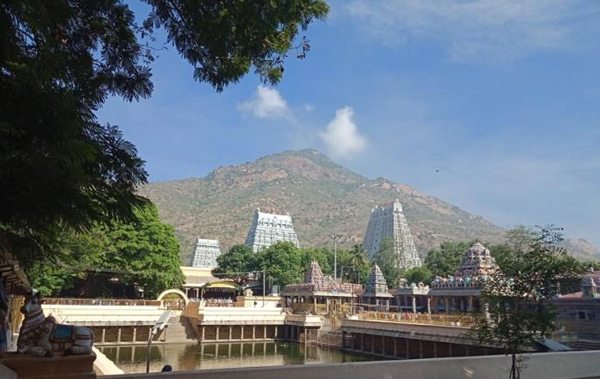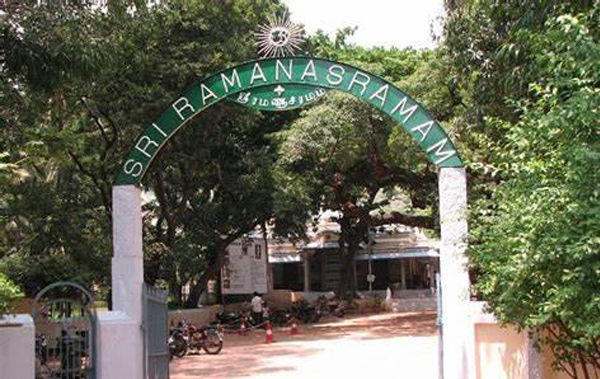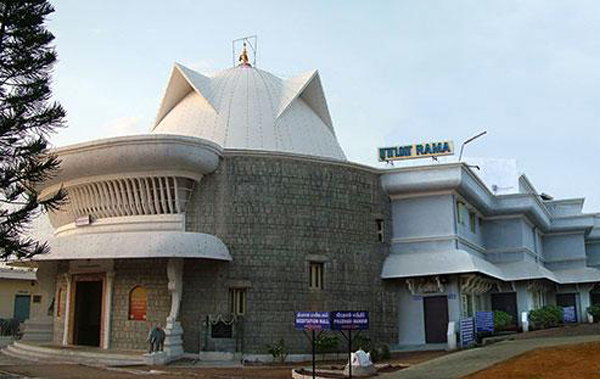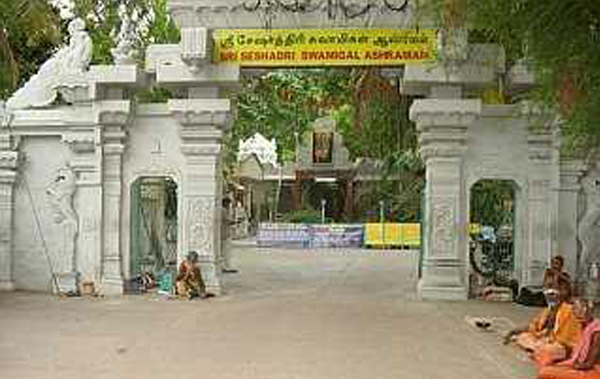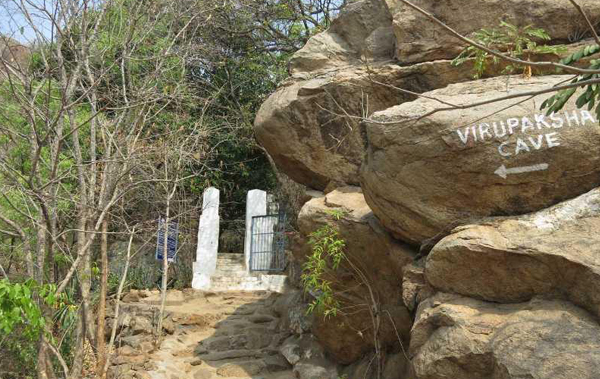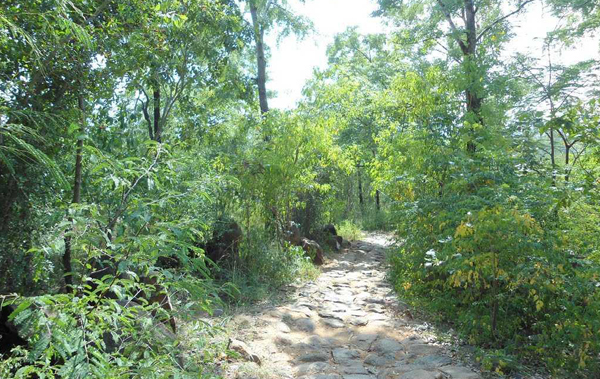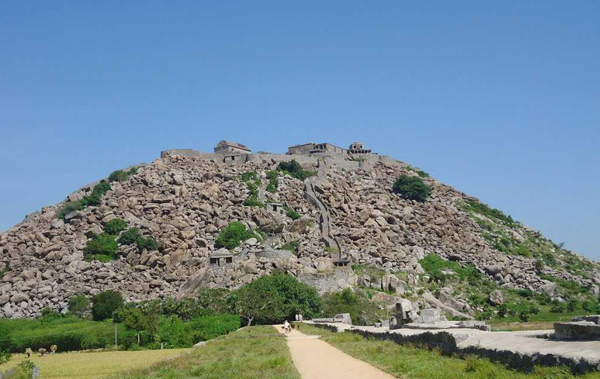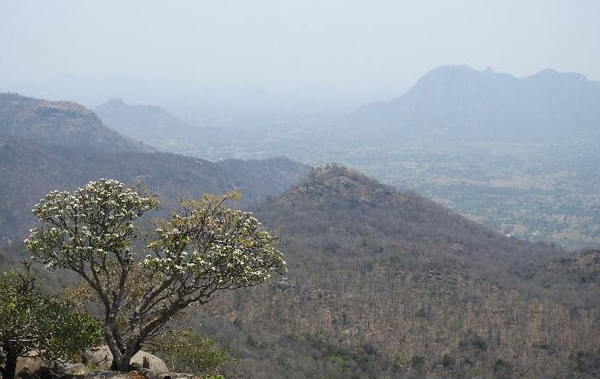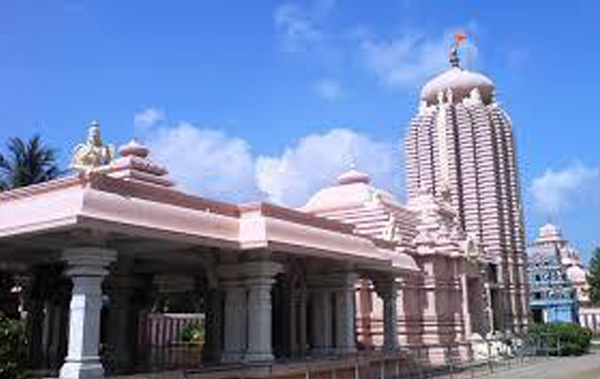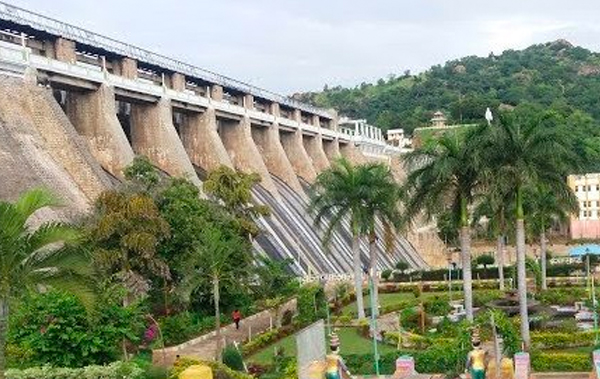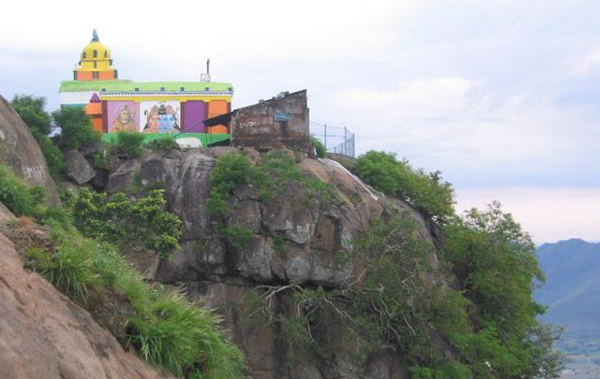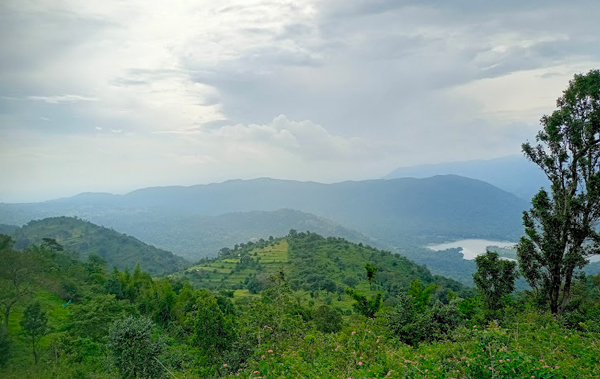PLACES OF INTEREST
Begin the day by exploring the spiritual side of Thiruvannamalai. Visit Annamalaiyar temple which is dedicated to Lord Shiva and Explore places of your interest
Tiruvannamalai is very famous place both spiritually and historically. The temple is very unique as it is one among pancha bhooda stalam and sung by saiva kuravargal.The annamaliayar kovil was built before 1100 years and the architecture of the temple has its contribution from various kingdom from Cholas, Pandias, Sambuvarayars Posalas, Vijayanagar kings, Nayaks, Nagarathargal, Cheftains and Zamindars. The temple posseses more than 1000 statues and 450 stone inscriptions.
The temple has more than 100 sannidhis. Various idols, bronze statues, paintings, thirusutrugal, thirtakulangal, 1000 pillar mahal and towering gopurams are the specialites of the temple. The temple is very enormous with an area covers around 25 acres and the East gopuram built by King Krishnadevarayar with a height of 217 ft which is the second tallest gopuram in Tamilnadu. Other than this, the temple consists of vallala Maharaja gopuram, kili gopuram and ammani amman gopuram which are of historic important. The main deity of the temple is Annamalaiyar and Unnamalai Amman. The Ezhuthu Mandapam situated in Girivalam path is an excellent art gallery. Kanthashram. Pavazhakundru. Ramanashram and Astalingas around the Girivala path are few notable tourist spots.
An ashram did not spring up immediately. At first there was only a shed with bamboo poles and a roof of palm leaves. Through the ensuing years the numbers grew, donations came in and regular ashram premises were built – the hall where Ramana sat, the office, the bookstore, the dispensary, the guest room for male visitors and a couple of small bungalows for guests who made a longer stay. A group of sadhus made a colony at Palakottu in a grove to the west of the ashram. With the advent of Cow Lakshmi a cowshed was built along with a large kitchen to cater to the ever-increasing throng of visitors. Dear to Ramana’s heart was taking care of the cows and feeding people, particularly sadhus and poor people. In the course of time a proper temple, the Matrubhuteswara temple, was constructed over Mother Alagammal’s burial place and daily worship continues to be carried out there. Ramana would never allow any preference to be shown to him. In the dining hall he was adamant on this point. Even when some medicine or tonic was given to him he wanted to share it with everyone.
Ashram management was not his concern either. If rules were made he would be the first to abide by them, but he himself did not make any. His work was purely spiritual: silently guiding the ever-growing family of devotees who gathered around him. Ramana’s younger brother Niranjanananda Swami (Chinna Swami) became the Ashram manager or Sarvadhikari. The focus of all attention was the meditation hall (Old Hall) where devotees sat with the Maharshi. The dynamic silence of the hall was vibrant with his grace. Divine love was shining in his eyes and when necessary his potent words illuminated the visitors. There were no rules that everyone must meditate in a specific way or at a given time. During the early years the doors were never closed, and even at night people could come to be with him. Concerned that he should be accessible to all visitors at all hours, Ramana never left the Ashram except for his daily walk on the Hill and in Palakottu (an adjacent sadhu colony), morning and evening. In early years, he sometimes walked the the circuit road around the mountain (Giri Pradakshina).
In 1949 it was detected that Ramana had sarcoma in his left arm. In spite of intense medical care, on April 14, 1950 it was apparent that his physical end was near. In the evening, as the devotees sat on the verandah outside the room which had been specially built for Bhagavan’s convenience during his illness, they spontaneously began singing “Arunachala Siva” (The Marital Garland of Letters). On hearing it Ramana’s eyes opened and shone. He gave a brief smile of indescribable tenderness. From the outer corners of his eyes tears of bliss rolled down. One more deep breath and no more. At that very moment 8:47 p.m. what appeared to be an enormous star trailed slowly across the sky passing to the north-east towards the peak of Arunachala. Many saw this luminous body in the sky, even as far away as Bombay and struck by its peculiar appearance and behaviour, they ascribed this phenomenon to the passing of their Master. To this day the power of Sri Ramana has not diminished. Often visitors to the ashram have remarked, “But one can feel his presence very strongly.” Before Sri Ramana gave up his body, devotees went to him and begged him to remain for a while longer as they needed his help. He replied “Go! Where can I go? I shall always be here.”
There is no need for any Japa or Dhyana for you. You are in the company of this Beggar all the time. So you are doing tapas all the time. Your Service to this Beggar will do. Transformation is going on all the time. The greatest Tapas for any one is to stay near one`s Guru and do service to Him. But very few are given this chance Yogi Ramsuratkumar, born 01.12.1918 at Nardara, a small village on the banks of River Ganga, Uttar Padesh. From his childhood he developed an inexplicable affinity for Ganga He befriended many saints and medicants roaming around river ganges. His experience in childhood, at River Ganga, with its holy men, itself proved later to be the formative influence that made him turn to spirituality.
He was fascinated by a particular sadhu, Kapadia Baba, with whom he spend more time, also watching other sadhus doing Ganga Parikrama He befriended many saints and medicants roaming around river ganges. His experience in childhood, at River Ganga, with its holy men, itself proved later to be the formative influence that made him turn to spirituality An incident led him to seek the cause for life and death. Kapadia Baba directed him to South India to get answers. In 1947 and 1948 he travelled to Aurobindo Ashram, Puducherry, Ramana Ashram, Tiruvannamalai and Papa Ramdas's Ananda Ashram, Kanhangad.
In 1952 he became aware of Mahanirvan of Sri Aurobindo and Ramana Maharishi. To get answers for his questions in the course of his search for truth,he rushed to Ananda Ashram, Kanhangad, where His Guru, Papa Ramdas, initiated him with the Mantra 'Om Sri Ram Jai Ram Jai Jai Ram.' Repeating 'Rama Mantra' all the time for one week he merged with Brahman, the one and only existence. In communion with 'Brahman' all the time he travelled all over India, mostly on foot from 1952 to 1959 and settled at Tiruvannamalai. He had neither any place to stay nor any money for food or other needs. He could be found underneath the Punnai tree, Railway platform, Arunachaleswarar Temple or on the protruding planks of vessel shops during nights. He used to circumbulate around Mount Arunachala.
People though very few in number realized the divinity in him and found it difficult to locate him. Some devotees purchased a house for him in Sannadhi Street, near Arunachaleswar Temple, so that they could locate him with ease. Though the house was purchased in 1977 he occupied it only in 1978. He stayed there doing His Father's work till 23.11.1993. Pradhan Mandir This is a huge hall which can accommodate more than 4,000 devotees. This is a wonderful structure with aluminum roofing with concrete pillars and brick mortar walls without any intermediate pillars in the big huge hall.In the centre of the hall stands the Majestic sila roopa (statue in Metal) of Guru Maharaj installed by himself over crores of Ram Nama.
Located near Ramana Aashram, this aashram has a history of its own! Mahan Sri Seshadri Swamigal was a 20th century saint who had displayed majestic powers. The devotees believe that he had carried out many miracles and has the power to bless the devotees who offer worship at this ashram. There is beautiful garden in the premise of the ashram. A perfect place to medidate and unwind. The ashram offers accommodation facilities too.
This unique cave ashram in Thiruvannamalai is in the shape of the Hindu symbol 'Om'. The cave is situated atop a small peak in the Arunachala Hill, nearly 200 feet below the Skandasram cave. There are sever sacred springs on the slope of the hill. The caves seem to be named after the renowned 13th-century saint named Virupaksha Deva, who is said to have spent most of his life here. This is also where his samadhi is, i.e: his ashes are preserved here and worshipped every day.
Known as the "Troy of the East" by the British, Gingee Fort is located in Villupuram District of Tamil Nadu, 160 kilometres from the state capital, Chennai and near the Union Territory of Puducherry. Locals have given the fort some notable names such as Senji, Chenji, Jinji or Senchi Fort. The majestic fort has three different hilltop citadels and a massive boundary of thick walls and cliffs. Owing to its enormous structure the fort is fortified to the extent that Shivaji, the Maratha king, named it as the "most impregnable fortress in India." Visiting the fort makes one learn the reason for why it has been called by such influential names. As you reach the fort, you realise that it has been located at the most strategic location which made it difficult for the enemies to enter its premise. The fort indeed is a result of genius minds.
Constructed mostly in the 16th century by the Vijayanagara Empire, the fort was later captured by the Marathas following the rule of Mughals, French and British on it. The fort was then sadly abandoned in the 19th century. Today while few foreigners visit her, Gingee is heavily flocked by the domestic tourists for starring in various films. The main road between Puducherry and Tiruvannamalai segments through the fort, just to the west of Gingee town. Out of the three citadels situated atop, the most unchallenging to reach is Krishnagiri which rises on the north side of the road. To the west is the highest of the three, Rajagiri, and the most distant and least compelling is Chakklidurg which lies in the south-east direction. The remnants of the Gingee fort and their dramatic beauty form a peaceful setting making it a very worthwhile spot. Hence, a day trip to the fort is no harm. You surely are going to return with some fantastic pictures and a rich sense of history.
Villages with many temples are known as Padavedu @ Padaivedu Village. The temple is situated at a distance of 55 Km from Tiruvannamalai, 40 Km from Vellore and 20 Km from Arni. After the fall of Chola dynasty in 10th and 11th Century, the Sambuvarayars, one of the minor kingdom of Chola dynasty declared their independence and established their rule in Padaivedu. Even today the remains of their fort can be seen at this place. Arulmigu Renugambal temple is one of the famous Sakthi stalas. The amman idol in Garbha griha is self-existing and the presence of Lord Brahma, Thirumal and shiva beside her proves that Lady Sakthi is predominant in the universe. Amman as suthai thirumeni is present at the backside along with Banalingam and Janakarshana chakaram established by Adhisankarar.
The Vibhuti Prasatham given here was collected every year in the tail month of aani from the place of yajna done by Saint Jamathkanni and it is believed that this vibhudi prasadam will cure disease and avoid evils. Apart from the presence of many numbers of temples and the place is surrounded by mountains, coconut groves and banana sheds. The head of the Goddess Renuga devi was present as self-exiting in the Garbha griha and festivals celebrated on every Friday in the month of Aadi is very special.
Arulmigu Raghumayi Sammetha pandurangan temple in Thennakoor Village is an example of nagara style of architecture in North India. As per hindu puranas it is a place where Goddess Lakshmi Devi live and they maintain the gardens well. The enterance gopuram is very tall and the vimanam present inside are in nagara style of architecture and it has a huge mandapam with a lot of paintings and we can seek blessings of the 10.5 ft tall Pandurangan and 8.5 ft tall Raghumayi idols from here. The deities are adorned by different styles of clothes and ornaments in 6 days a week. The place is located in Vandavasi to Kanchipuram highway, 5 Km from Vandavasi.
Sathanur Dam was built in 1956 across the Thenpennai River. with the capacity of 119 feet. It is one of the biggest dam in Tamilnadu constructed in Kamarajar period. The parks and pleasant atmosphere are enjoyable to the tourist. There are more than 100 crocodiles in the crocodiles park. It is at a distance of 30 Km from Tiruvannamalai and 24 Km from Chengam.
As per the opinions of the historians, the place ruled by the king Nanan Sei nanan during ancient period is Navira hills, presently called as Parvathamalai. It is present in the foothill of javadi hills and Abidagujambal – Maligarjunar temple is locaed in the hill top. The temple is a boon for mountain treckkers with natural scenaries and gentle breeze. This hill is known as Thenkailayam and workshipped by many saints. This place can be reached either from Thenmadhimangalam or from kadaladi. It is at a distance of 25 km from Polur and 30 Km from Tiruvannamalai.
Javadhu hill is a part of eastern ghats extends to an area of 260 sq.km. The malayee triblas live at a great number in this hills. Moe than 200 hamlet villages are present here. Evidences of New stone age people are found in the place pathiri and head stones and funeral symbols are seen in Kilcheppili and Mandaparai. Tombstones from Pallava period to Nayaka period can be seen here. The Kovilur Shivan temple built at Chola dynasty is of historic importance. The people cultivates millet like Thinai, samai and varagu. Honey, pepper, fruits are also provides the livelihood for these people. Beema falls, boat house, park Kovilur Siva temple, Vainu bappu Observatory, Amirthi Zoo are the important tourist spots. Bus facilities are available from Polur and Tirupatthur.
Heritage Tourism:- Jain Temple, Thirumalai It is a famous Jain temple. The 18 feet statue of Neminadhar, 23rd theerthangarar is present in the hilltop. The thirupathangal and Kundavi nachiyar inscription are present here. The Mahavir temple located at the foot hill has 5 feet sudhai statue, statues of theerthangarar’s, cave paintings, stone inscription. The temple is present at a peaceful and proper ventilated place. This temple can be reached from vadamathimangalam Via Polur, Arni or from Mattapiraiyur or Kommanandhal Via Devikapuram.
Mass Tourism - Karthigai Deepam
Tiruvannamalai temple celebrates many festivals throughout the year and the important one is being celebrated in the tamil month of Karthigai (Nov – Dec) full moon day.The karthigai brahmahotsavam is celebrated for 10days and on full moon day at about 06.00 hrs in the evening the mahadeepam will be lighted and this can be viewed for many kilometers around the mountain. As the God Arunachaleeshwarar in Tiruvannamalai is in the form of fire (agni), the lamp lightened on the mountain top is considered very special. lakhs and lakhs of people gather in Tiruvannamalai for maha deepam and go around the mountain for Girivalam. Periya Theer (Chariot) is also a special function of this festival. Karthigai Deepam is considered as one of the important festival of India.
